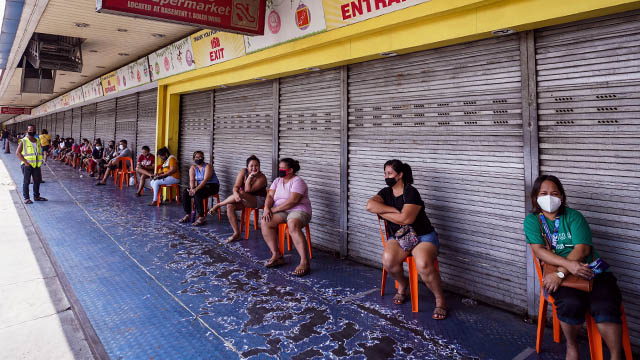
The Philippines is now at "low risk" for COVID-19, the government said in early July, citing at least two indicators. This announcement prompted a World Health Organization representative on July 6 to say that the country should still "err on the side of caution" given the threat of virus variants.
Why are we now at "Low Risk"?
The Department of Health Epidemiology Bureau cited the -9% two week growth rate recorded from June 13 to 26, comparing it to 15% from May 30 to June 12. If the growth in cases in the last two weeks is zero or below, an area is considered at low risk.
The department also noted the decline in the average daily attack rate or ADAR from June 13 to 26 at 5.42, which is lower than the 5.96 recorded from May 30 to June 12. If ADAR is between one and seven, there is moderate risk.
While quarantines have begun to ease in Metro Manila, some areas remain "high risk" such as Davao Region, Western Visayas, SOCCSKSARGEN, and Eastern Visayas, said Doctor Alethea De Guzman, the head of the Department of Health (DOH) epidemology bureau.
Also read: Why Scientists Are Worried About the Delta Variant
"I think we need to be more cautious. It's not costly to err on the side of caution... We need to be consistent in our message that the public needs to be aware that the risk remains," WHO country representative Doctor Rabindra Abeyasinghe told ANC when asked if he agreed with DOH.
What does "Low Risk" mean?
De Guzman did caution against the frailty of these numbers especially with the entry of the more contagious Delta variant. In Indonesia, where said variant is spreading, authorities are bracing for a worst-case scenario of up to 50,000 daily cases.
For the OCTA Research Group, recent numbers do suggest that the Philippines is now low-risk, but these numbers only refer to the country's health infrustructure and "not necessarily risk to the individual Filipino."
"Even though that risk in certain places in the Philippines is at a low point now as compared to the last six months particularly in the NCR, for the most part, what the DOH is saying is that if you look at the numbers, the risk of a devastating surge to our healthcare infrastructure is quite low," Fr. Nicanor Austriaco, OCTA fellow and a UST biology professor, told ANC.
Austriaco said individuals have come up to him asking what DOH's pronouncement means for them.
"One of the challenges is that I've had individual citizens text me and talk to me, and they're asking is it low risk for them and does that mean they can remove their face masks because the risk is low. In that case, I would say no," he said, noting that the risk to individual infection would require different metrics.
"They [the public] need to follow the protocols, they need to follow the minimum health standards. Giving them wrong messaging could result in lower compliance with those minimum health standards, with the mask-wearing, the physical distancing and hygiene. We have to be careful here," Abeyasinghe earlier said.
So when will the risk be low enough?
Austriaco said being mask-free is a "matter of policy", something that the Philippines has yet to establish, having just started ramping up nationwide vaccinations.
Different countries all over the world have adopted different policies and metrics, he said.
"In the experience of Israel after their very successful vaccination campaign, risks would drop significantly once the average daily attack rate falls below 1. And that would be less than 100 cases in the NCR per day," he said.
As of July 6, of the Philippines' 49,613 total active infections, 7,164 come from the capital region. This means the virus is still very much present there, even with a reported decline.
If there's one piece of "good news" the Philippines can cling to for now, Austriaco said it's how current data suggests that in a few months' time, the National Capital Region in particular could be "Delta-resilient" if the current vaccination strategy continues, giving priority to vulnerable areas to achieve "population protection."
While vaccination drives have brought down infections in the West, prompting the lifting of mask requirements in some countries, complacency against the Delta variant has been fueling fresh lockdowns.
With variants possibly outpacing vaccinations, authorities are urged to exercise caution in the easing of public health restrictions.
Hey, Spotters! Check us out on Viber to join our Community and subscribe to our Chatbot.
Source: Spot PH
No comments:
Post a Comment